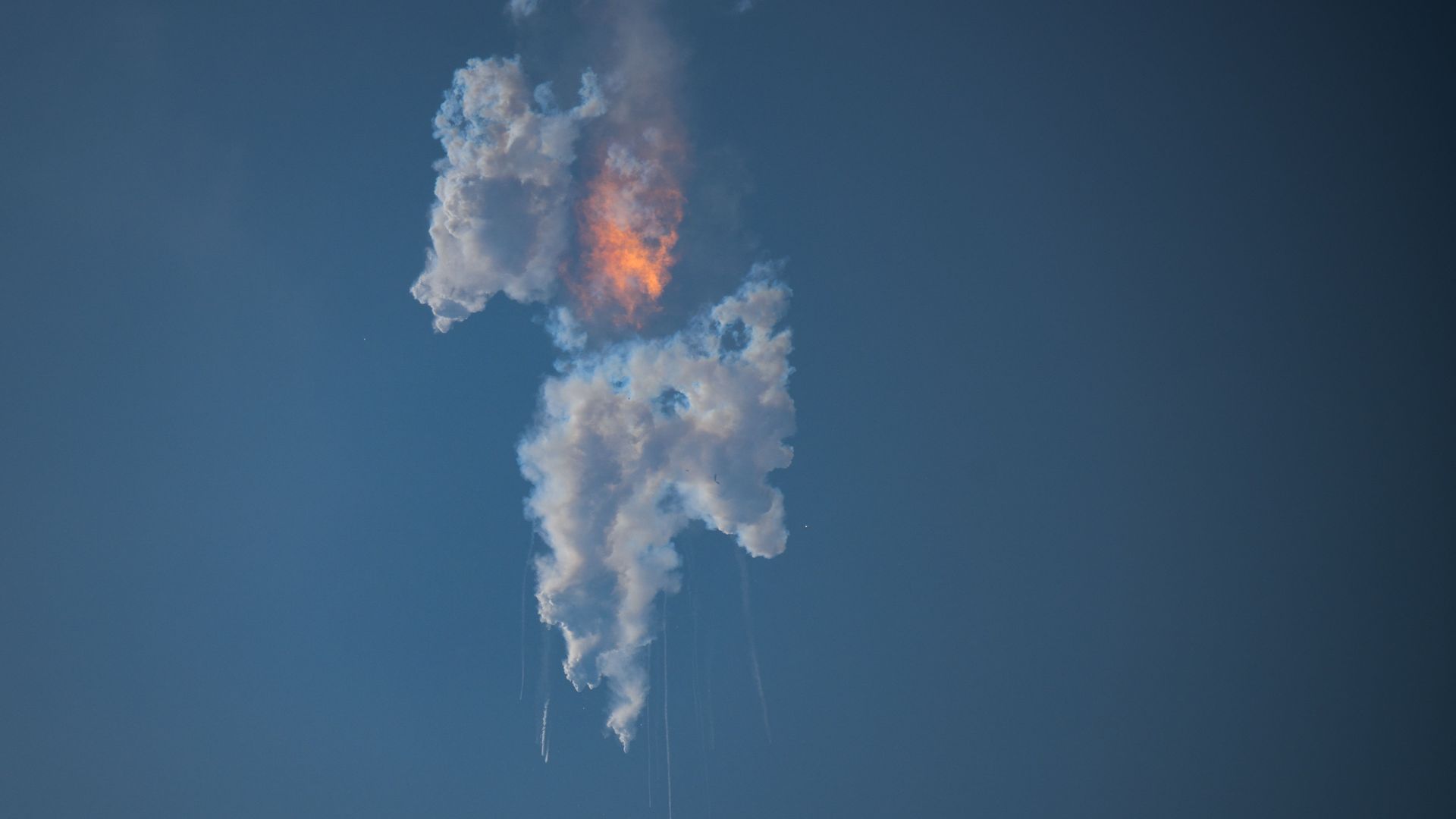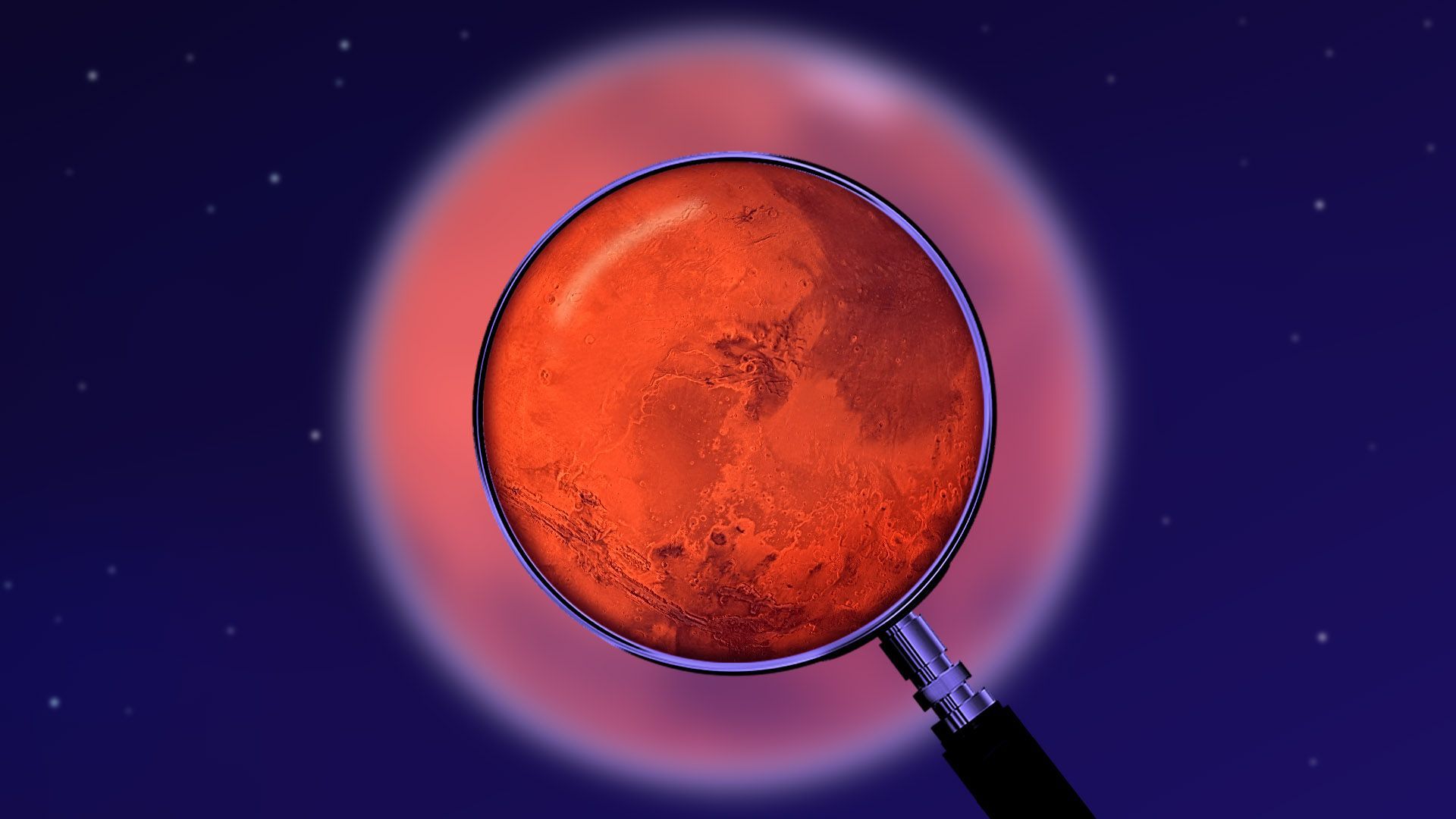| | | | | | | | | | | Axios Space | | By Miriam Kramer · May 02, 2023 | | Thanks for reading Axios Space. At 1,443 words, this newsletter is a 5½-minute read. - Please send your tips, questions and book recommendations to miriam.kramer@axios.com, or if you received this as an email, just hit reply.
| | | | | | 1 big thing: Modern warfare in space |  | | | Illustration: Annelise Capossela/Axios | | | | The U.S. military remains arguably the most sophisticated in orbit today, but Russia and China are quickly developing technologies that could interfere with — and even take out — U.S. satellites. Why it matters: Space is essential to the way the U.S. wages war. Satellites are used for situational awareness on the ground and communication over extreme distances. - Space is "really a great enabler and has ... changed the speed of how we've been able to fight," Makena Young of the Center for Strategic and International Studies tells Axios.
Driving the news: A report from the Financial Times last month revealed that China is developing cyber capabilities that would allow the nation to "seize control" of satellites, making them effectively useless, according to a U.S. intelligence report. - Two recent reports from the Secure World Foundation and CSIS highlight Russia's offensive posture in space and China's quick development of advanced capabilities, including satellite jamming technology and a space plane.
- The Space Force also acknowledged the threats posed by China and Russia in a statement detailing a $30 billion budget request for the Space Force that will help fund five more military launches in this budget, upping the number to 15.
The big picture: The U.S. military has historically relied on big, expensive satellites in orbit that are designed to collect exquisite images and other data but make for valuable targets for adversaries. - China has built its military architecture in space differently, making use of a number of less expensive satellites.
- The U.S. is also working to move toward a more resilient network of satellites prioritizing speed, efficiency and even leveraging commercial satellites, only building what they need to build and buying services otherwise.
Yes, but: Change in the U.S. has been slow. What Russia and China are doing today "is 20 years in the making," the Secure World Foundation's Brian Weeden tells Axios. - "The problem has not been their speed of development. The problem has been how slow our response has been." That slow pace is largely due to American politics, Weeden added, saying that getting the buy-in and budgets needed to change how parts of the Department of Defense do business can be difficult.
- In the past, it may have been fine to take up to a decade to develop space technology needed to outpace adversaries in space.
- "[B]ut that's not going to really work now because the pace of evolution is so fast that if you take 10 years, 20 years to build something, it's outdated before you launch it," John Plumb, assistant secretary of defense for space policy, told Axios at the Space Symposium in April.
What to watch: "I think that everyone is learning a lot of lessons from what's been going on with Russia and Ukraine and their successes and failures," Young said. - Russia hacked ViaSat just before invading Ukraine, representing a major loss of communication for Ukraine's military in the early days of the war. Russia has also jammed GPS signals to discourage tracking vehicles near the border.
- "I think not only the U.S., but China is also paying attention ... for any future steps they may take possibly in Taiwan," Young added.
- Some are concerned that one of China's first salvos in an invasion of Taiwan could involve sidelining U.S. satellites that could aid in a response in the region, deterring the nation from coming to Taiwan's defense.
- "The United States would be hard-pressed to defend Taiwan without GPS, without satellite communications, without space missile warning, without space-based intelligence," Weeden said.
|     | | | | | | 2. FAA sued after SpaceX Starship explosion |  | | | SpaceX's Starship exploded on April 20. Photo: Patrick T. Fallon/AFP via Getty Images | | | | Environmental and cultural heritage groups filed a lawsuit Monday against the FAA saying it didn't perform a thorough enough environmental review of SpaceX's Starship program. Why it matters: When Starship took flight on April 20, the ignition of its Super Heavy rocket shattered parts of its launch pad in Boca Chica, Texas, scattering debris for miles around the launch site. - The test sparked a brush fire on state park land and the rocket was forced to self-destruct over the Gulf of Mexico after only a few minutes of flight.
- "The area surrounding the SpaceX facility at Boca Chica is a biologically diverse and essential habitat for many species," the lawsuit, brought by the Center for Biological Diversity, American Bird Conservancy, Surfrider Foundation, Save RGV and the Carrizo/Comecrudo Nation of Texas, reads.
Driving the news: The lawsuit contends the FAA should have performed an environmental impact statement (EIS) for the Starship program but instead opted for a less stringent and quicker environmental review. - That review found SpaceX's activities in Boca Chica wouldn't have a significant impact on the environment when paired with mitigating measures.
The other side: The suit alleges, however, that those mitigations aren't enough to prevent significant harm to the area caused by SpaceX's Starship program, which has had at least eight explosions at the site in the last five years, the suit says. - The FAA "failed to take a hard look at the environmental impacts of the SpaceX launch program," the suit reads. Those include "increased light, heat and environmental pollution as well as risk of wildfires, damage to critical habitat and the launch program's contribution to climate change."
- The plaintiffs are asking the court to mandate that the FAA perform an EIS. The FAA tells Axios it "does not comment on ongoing litigation matters."
Context: "[T]o the best of our knowledge there has not been any meaningful damage to the environment that we're aware of," SpaceX founder Elon Musk said according to CNBC reporter Michael Sheetz during a Twitter Spaces Starship update this weekend, before the lawsuit was filed. - The FAA grounded the Starship program after the April 20 accident, which is standard procedure after a rocket mishap in order to investigate what went wrong.
|     | | | | | | 3. A rocky planet mystery |  | | | Artist's illustration of the planet orbiting its star. Image: NASA/ESA/CSA/Joseph Olmsted (STScI)/Leah Hustak (STScI) | | | | Scientists using NASA's James Webb Space Telescope may have spotted water in the atmosphere of a planet orbiting a distant star, but the vapor may actually be coming from the outer atmosphere of the star itself. Why it matters: Life as we understand it depends on water, so finding water vapor in the atmosphere of a rocky planet would be a major moment in exoplanet science. - "But we must be careful and make sure that the star is not the culprit," Kevin Stevenson, one of the authors of a study accepted for publication in The Astrophysical Journal Letters detailing the finding, said in a statement.
What's happening: The planet, named GJ 486 b, orbits too close to its star — circling the star every 1.5 Earth days — to be habitable, with a surface temperature of 800°F. - Scientists think the planet may be tidally locked to its star the way our Moon is to Earth, with a permanent day side and permanent night side.
- If confirmed, this discovery could mark the first time scientists have definitively detected an atmosphere around a rocky planet far from our own solar system.
The intrigue: The data suggests it's also possible the water vapor signal is actually from relatively cool starspots on the face of the red dwarf star the planet orbits. - "We didn't observe evidence of the planet crossing any starspots during the transits," Ryan MacDonald of the University of Michigan, one of the study's authors, added in the statement.
- "But that doesn't mean that there aren't spots elsewhere on the star. And that's exactly the physical scenario that would imprint this water signal into the data and could wind up looking like a planetary atmosphere."
- Scientists hope to perform more observations of the star system with the JWST to learn more about where the water vapor could be coming from.
|     | | | | | | A message from Axios | | The Axios Today podcast | | |  | | | | Catch up on the important news and interesting stories you won't hear anywhere else with host Niala Boodhoo. Each weekday morning, get the latest in everything from politics to space to race and justice. Listen now for free. | | | | | | 4. Out of this world reading list |  | | | Illustration: Sarah Grillo/Axios | | | | ✈️ Court approves plans for Virgin Orbit bankruptcy sale (Jeff Foust, SpaceNews) 🚀 SpaceX rocket struggled to self-destruct as it spun out of control (Kenneth Chang, New York Times) 🛰 NASA is keeping Voyager 2 going until at least 2026 (Emma Bowman, NPR) 💦 China's Mars rover finds signs of recent water activity on the Red Planet (Sharmila Kuthunur, Space.com) |     | | | | | | 5. Weekly dose of awe: Clouds of dust |  | | | Photo: NASA/ESA/STScI | | | | A bright yellow star illuminates the dust of the nebula where it was born. - This photo, taken by the Hubble Space Telescope, reveals a star-forming region located about 960 light-years away.
- "To capture this image, Hubble peered through a veil of dust on the edge of a giant cloud of cold molecular hydrogen — the raw material for fabricating new stars and planets under the relentless pull of gravity," NASA wrote in a description.
- Explore the full photo to see newly formed baby blue stars and the red glow of hydrogen.
|     | | | | | | A message from Axios | | The Axios Today podcast | | |  | | | | Catch up on the important news and interesting stories you won't hear anywhere else with host Niala Boodhoo. Each weekday morning, get the latest in everything from politics to space to race and justice. Listen now for free. | | | | 🪖 Big thanks to Alison Snyder for editing, Sheryl Miller for copy editing, and the Axios visuals team. If this newsletter was forwarded to you, subscribe. |  | | Are you a fan of this email format? Your essential communications — to staff, clients and other stakeholders — can have the same style. Axios HQ, a powerful platform, will help you do it. | | | | | | Axios thanks our partners for supporting our newsletters.
Sponsorship has no influence on editorial content. Axios, 3100 Clarendon Blvd, Arlington VA 22201 | | | You received this email because you signed up for newsletters from Axios.
To stop receiving this newsletter, unsubscribe or manage your email preferences. | | | Was this email forwarded to you?
Sign up now to get Axios in your inbox. | | | | Follow Axios on social media:    | | | | | |
No comments